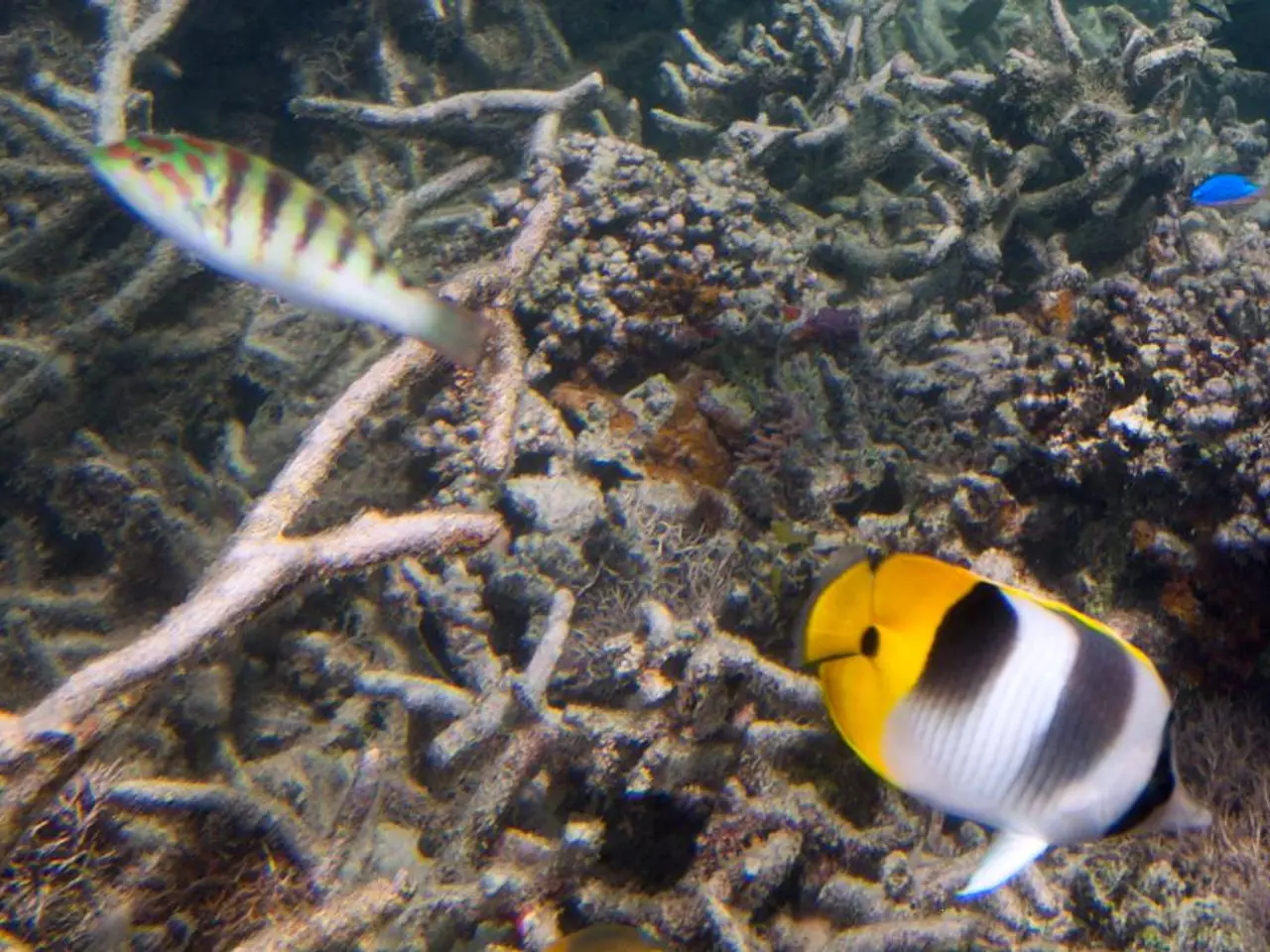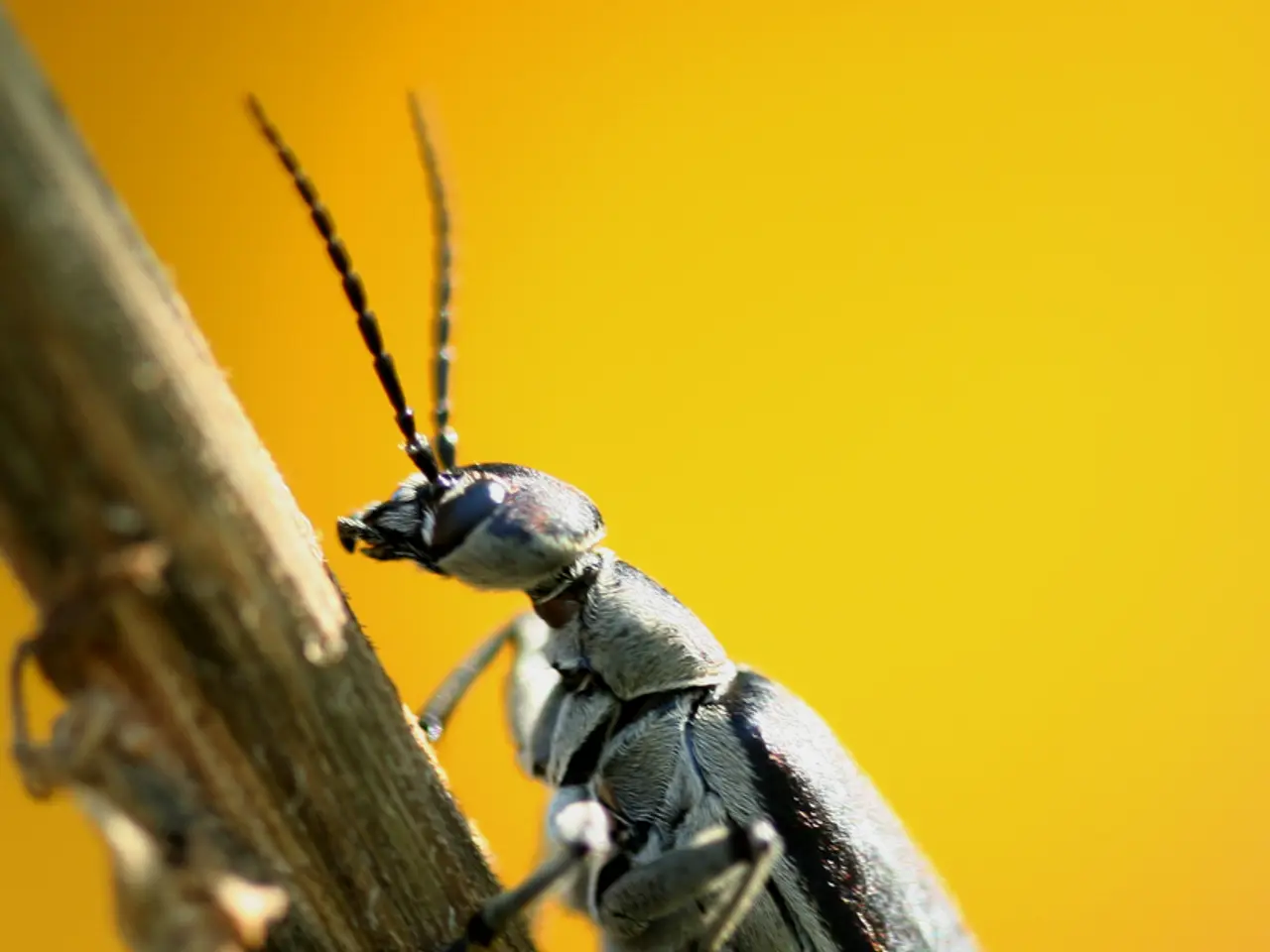Caring for Cardinalfish: A Comprehensive Guide
In the vibrant world of saltwater aquariums, the Cardinal fish stands out as a popular choice for its striking appearance and peaceful temperament. However, like any aquatic creature, Cardinal fish require careful maintenance to thrive in captivity.
Stable water conditions are essential for these fish, with a temperature range of 72-78°F, salinity of 1.020-1.025, pH of 8.1-8.4, and nitrate levels below 20 ppm. Aquascaping should mimic their natural habitat, offering open swimming space with plenty of hiding spots, achieved through the use of live rock, caves, and coral structures.
Common health concerns for Cardinalfish in saltwater aquariums, particularly the Banggai cardinalfish (Pterapogon kauderni), include the Banggai cardinalfish iridovirus (BCIV), stress-related illnesses, swim bladder disease, and diseases from poor water quality.
BCIV, a species-specific viral disease, affects wild-caught specimens almost exclusively and has a 100% mortality rate. Symptoms include suppressed appetite, lethargy, loss of balance, sunken gut, and darkening pigmentation before death. Stress lowers the immune resistance of Cardinalfish, making them more susceptible to infections and diseases.
Swim bladder disease, although not unique to Cardinalfish, can occur due to overeating, gulping air, or infections. This affects buoyancy and movement, and may contribute to feeding difficulties. Prevention includes proper feeding habits and maintaining optimal water quality.
To minimize health issues in Cardinalfish, it's recommended to source captive-bred specimens, quarantine new fish before introducing them to the main tank, maintain excellent water quality with regular testing and water changes, and feed appropriate, high-quality meaty foods such as mysis and brine shrimp.
Cardinal fish are compatible with gentle species like gobies, clownfish, small wrasses, dwarf angelfish, invertebrates like shrimp and snails. Avoid aggressive fish like larger wrasses, dottybacks, or predatory species.
The Banggai cardinalfish, found in the Indo-Pacific, including the Banggai Islands, is endangered due to over-collecting, which increases the risk of disease in wild-caught specimens because of handling and transport stress.
Patience and careful observation are essential for successful breeding. Cardinal fish are mouthbrooders, with males carrying fertilized eggs in their mouths until hatching. Provide infusoria or rotifers as the initial food source for fry.
A 20-gallon tank is suitable for a small group of Cardinal fish, but larger tanks are better for multiple species or other tankmates. Cardinal fish are reef-safe and easy to keep. Common health concerns for Cardinal fish include Ich (white spot disease), fin rot, internal parasites, and stress-related illnesses.
Cardinal fish belong to the family Apogonidae, with multiple species such as Banggai Cardinalfish and Pajama Cardinalfish. These fish can grow up to 3-4 inches, depending on the species. To improve fry survival rates, a separate breeding tank can be used.
In summary, proper husbandry, quarantine, and sourcing captive-bred fish are key preventive measures for common health concerns in Cardinalfish. Maintaining optimal water quality and feeding appropriate, high-quality meaty foods are essential for their health and wellbeing.
In the realm of home-and-garden pet care, maintaining a saltwater aquarium can be a fascinating lifestyle choice, especially with the addition of Cardinal fish. To ensure these fish thrive in their new home, lifestyle considerations should include stable water conditions, a well-aquascaped environment that mimics their natural habitat, and regular monitoring of their health, taking into account common concerns such as the Banggai cardinalfish iridovirus and swim bladder disease.




